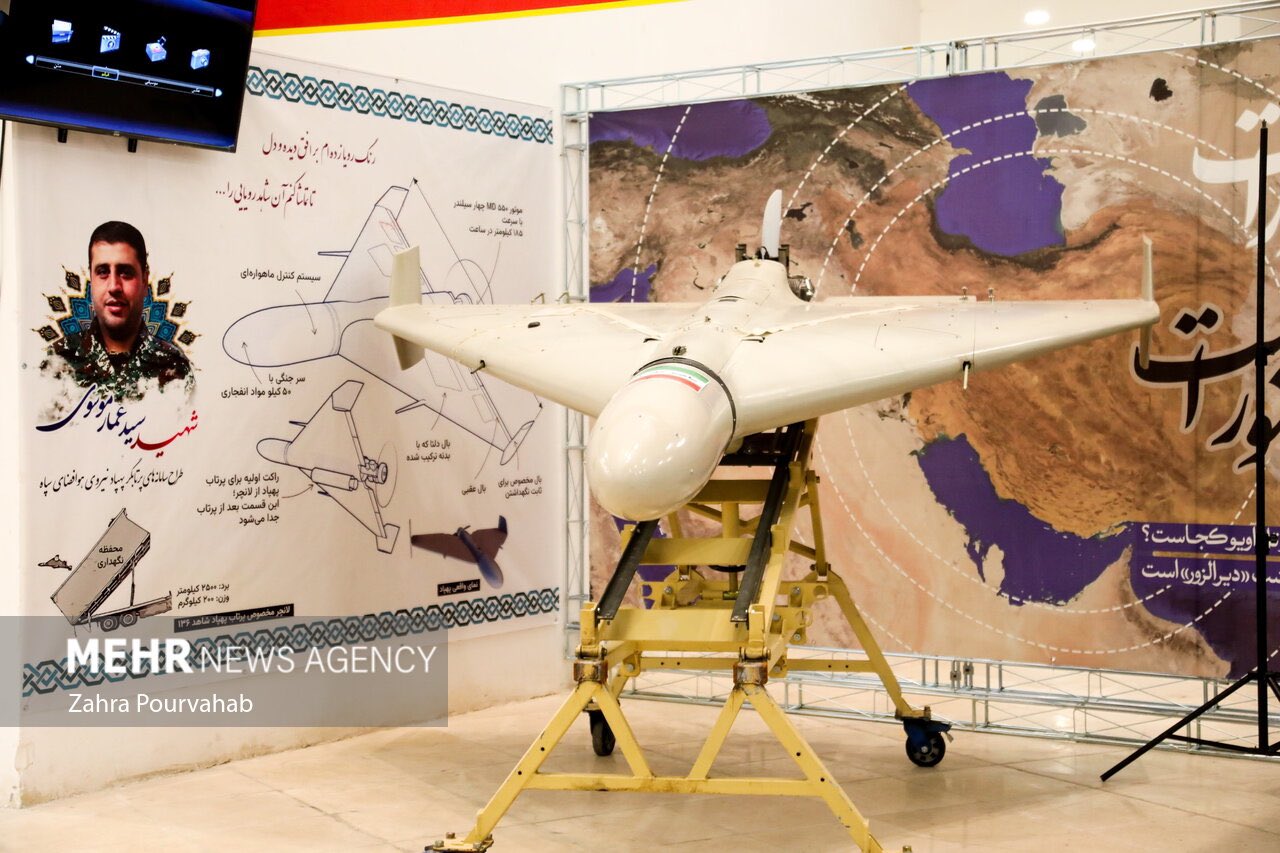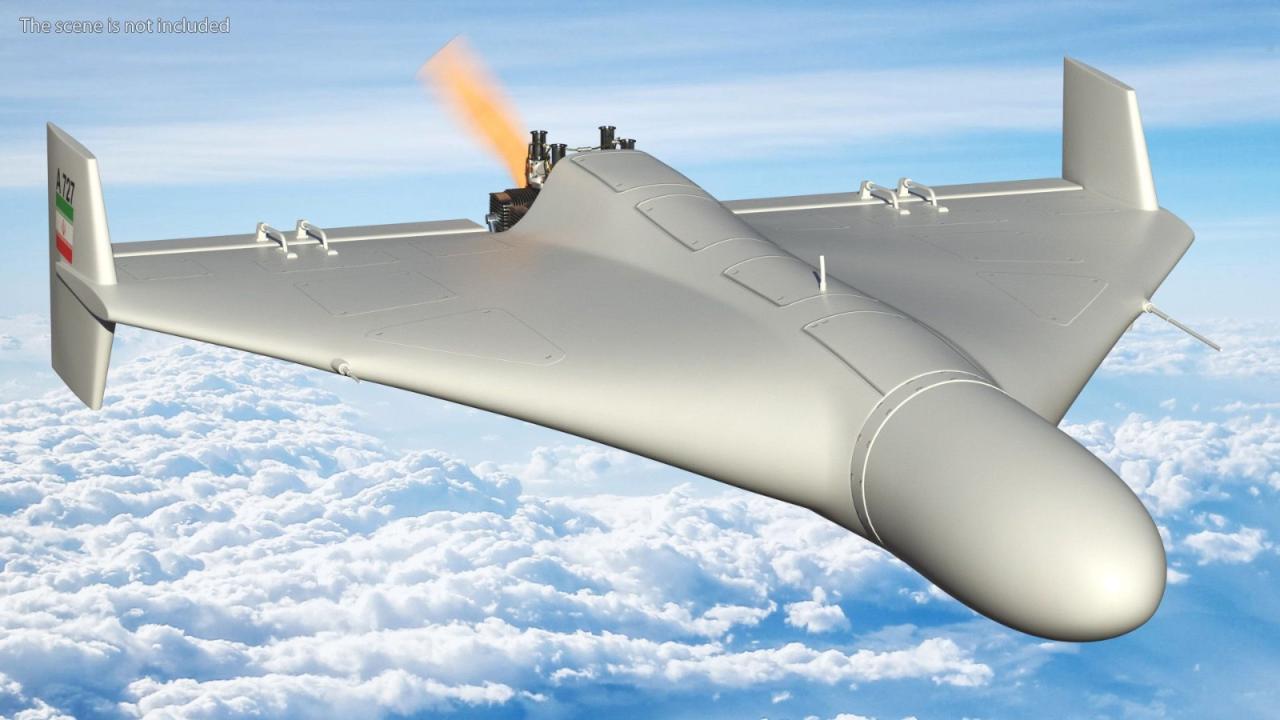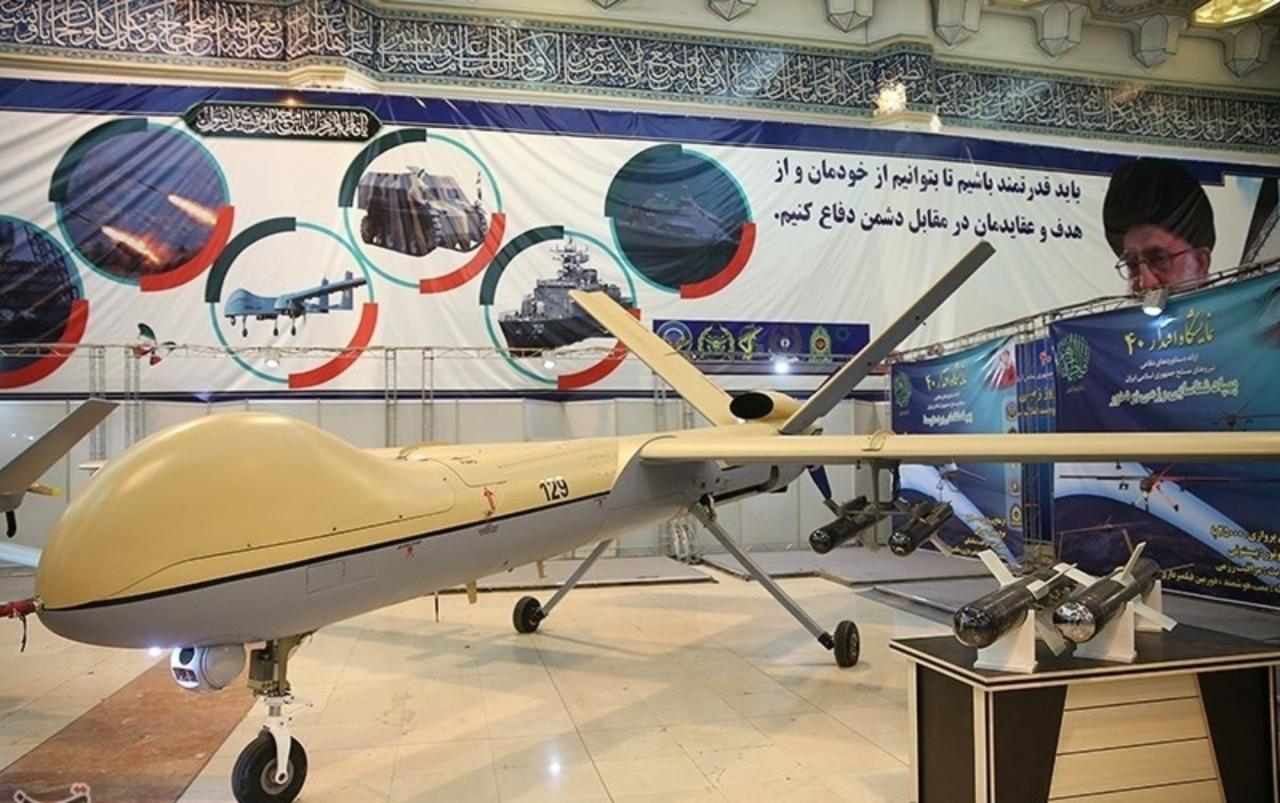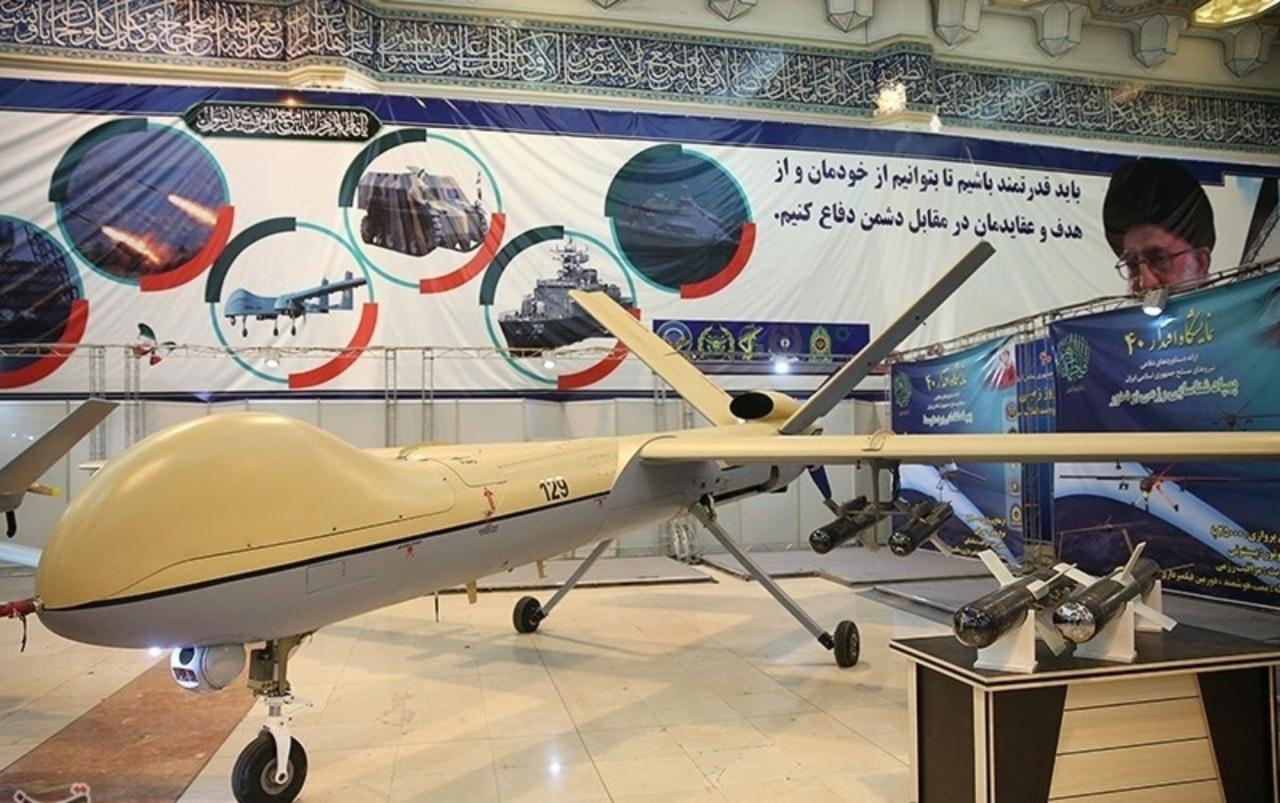Shahed drones have emerged as a significant force in modern warfare, prompting intense global scrutiny. These relatively inexpensive, yet effective, unmanned aerial vehicles (UAVs) have demonstrated surprising versatility and lethality in various conflict zones. This exploration delves into the design, operational capabilities, manufacturing processes, deployment strategies, countermeasures, and broader implications of this increasingly prevalent technology. We will examine both its tactical advantages and the geopolitical consequences of its widespread use.
From their relatively simple design and ease of production to their impact on battlefield tactics and international relations, the Shahed drone represents a significant shift in military technology. Understanding its capabilities and limitations is crucial for comprehending the evolving landscape of modern warfare and developing effective countermeasures.
Shahed Drone Design and Specifications

The Shahed drone, also known as the Shahed-136 or Geran-2, is a low-cost, expendable unmanned aerial vehicle (UAV) with a distinctive design and operational characteristics. Its design prioritizes simplicity and ease of production, contributing to its widespread deployment.
Physical Characteristics
The Shahed drone is a relatively small UAV, approximately 3.5 meters in length and with a wingspan of around 2.5 meters. Its construction utilizes lightweight composite materials to minimize weight and maximize payload capacity. The drone’s overall weight, including payload, is estimated to be around 200 kilograms.
Propulsion System
The Shahed drone is powered by a small, relatively low-power internal combustion engine, likely a piston engine, which provides thrust for its propeller. This propulsion system contributes to its relatively long flight endurance.
Payload Capacity and Types
The Shahed drone’s payload capacity is primarily focused on its warhead. While the exact weight varies, it’s generally believed to carry a high-explosive warhead weighing between 40 to 50 kilograms. This payload is designed for impact detonation, maximizing its destructive potential.
Shahed Drone Specifications Comparison
The following table compares the Shahed drone’s specifications to those of other similar loitering munitions.
| Specification | Shahed-136 | Bayraktar TB2 | Switchblade 600 |
|---|---|---|---|
| Length (m) | 3.5 | 6.5 | 1.4 |
| Wingspan (m) | 2.5 | 12 | 0.8 |
| Weight (kg) | ~200 | 650 | 22 |
| Payload (kg) | 40-50 | 50-150 | 5-10 |
Shahed Drone Operational Capabilities
The Shahed drone’s operational capabilities are tailored to its intended role as a loitering munition. Its design prioritizes simplicity and effectiveness in a specific operational context.
Flight Range and Endurance
The Shahed drone boasts a substantial flight range, estimated to be around 1,000 to 2,500 kilometers depending on wind conditions and payload. Its endurance is similarly impressive, with flight times ranging from several hours to potentially more than a day.
Navigation and Guidance Systems
The Shahed drone primarily relies on inertial navigation systems (INS) combined with GPS for navigation. While details about its specific guidance system remain classified, it is likely to use a combination of pre-programmed waypoints and potentially some level of autonomous target acquisition.
Communication Systems
The communication systems used by the Shahed drone are likely to be relatively simple and robust, focusing on reliable data transmission for navigation updates and target designation. Details about the specific frequencies and protocols used are not publicly available.
Operational Altitude and Speed

The Shahed drone operates at relatively low altitudes, typically below 3,000 meters, to remain undetected by higher-altitude radar systems. Its speed is moderate, allowing for extended flight times without excessive fuel consumption.
Shahed Drone Manufacturing and Production
The relatively low cost and ease of production of the Shahed drone are key factors in its widespread deployment. This section explores the manufacturing process and supply chain.
Key Components and Sources
The Shahed drone’s key components include the airframe, propulsion system, navigation and guidance systems, and the warhead. Many of these components are likely sourced from a variety of international suppliers, taking advantage of readily available off-the-shelf technologies.
Manufacturing Process and Assembly
The manufacturing process is likely modular and relatively straightforward, allowing for high-volume production. The assembly process likely involves several stages, from component fabrication to final assembly and testing.
Estimated Production Cost
The estimated production cost per unit is relatively low, contributing to its affordability and widespread availability. Estimates suggest that the production cost is significantly less than other more sophisticated UAVs, making it a cost-effective weapon system.
Potential Manufacturers and Suppliers
Several Iranian companies and potentially international suppliers are likely involved in the production chain. The exact details of the supply chain remain largely undisclosed due to its military nature.
Shahed Drone Deployment and Tactics
The Shahed drone’s deployment and tactical applications highlight its effectiveness as a low-cost, high-impact weapon system. Its operational characteristics influence its deployment strategies.
Deployment Methods
The Shahed drone is typically deployed from land-based launch sites. The launch process is relatively simple, requiring minimal infrastructure or personnel.
Combat Tactics
Shahed drones are often employed in swarm tactics, overwhelming air defenses with a large number of relatively inexpensive drones. They are also used for precision strikes against high-value targets.
Documented Missions and Outcomes
Numerous documented missions involving Shahed drones have been reported, with varying degrees of success. The drones have been used in conflicts across various regions, demonstrating their versatility and adaptability.
Tactical Applications Compared to Other UAVs
Compared to more sophisticated UAVs, the Shahed drone offers a different tactical approach. Its low cost and expendable nature allow for a higher risk tolerance and a greater saturation of attacks.
Shahed Drone Countermeasures and Defenses
The proliferation of Shahed drones has spurred the development of effective countermeasures and defenses. This section explores existing and potential strategies to mitigate the threat.
Effective Countermeasures
Several countermeasures have proven effective against Shahed drones, including electronic warfare systems, anti-aircraft artillery, and even small arms fire in some cases. The effectiveness of these countermeasures often depends on the specific circumstances and the scale of the attack.
Challenges in Countering Drone Swarms
Countering large swarms of Shahed drones presents a significant challenge. The sheer number of drones and their relatively low cost make it difficult to neutralize them all before they reach their targets.
The Shahed drone, a relatively inexpensive yet effective weapon, has garnered significant attention for its use in recent conflicts. Understanding its capabilities requires examining various surveillance technologies, including those deployed in coastal regions like Port Dover, where systems such as the port dover camera network provide crucial real-time monitoring. This kind of visual data can help analyze potential threats posed by drones like the Shahed, informing strategic responses and countermeasures.
National Strategies for Neutralization
Different countries have employed various strategies to neutralize Shahed drones, ranging from electronic jamming and missile systems to improved radar detection and deployment of counter-UAS systems.
Hypothetical Defense System
A hypothetical defense system against Shahed drones might integrate layered defenses, including early warning radar systems, electronic warfare capabilities, and a combination of kinetic and non-kinetic weapons to effectively neutralize incoming threats. This system would need to be adaptable and capable of responding to evolving tactics.
Shahed Drone Impact and Implications
The widespread use of Shahed drones has significant geopolitical, military, and economic implications. This section explores the far-reaching consequences of this technology.
Geopolitical Implications
The proliferation of Shahed drones has altered the geopolitical landscape, empowering smaller nations and non-state actors with previously unavailable military capabilities. This has led to increased tensions and a potential for wider conflicts.
Impact on Warfare
Shahed drones have fundamentally changed the nature of warfare, introducing a new dimension of low-cost, high-impact attacks. This has forced militaries to adapt their strategies and defenses.
Economic Consequences
The production and deployment of Shahed drones have economic consequences, both for the producing nation and for those facing attacks. The cost of defense against these drones is substantial, while the economic damage caused by successful attacks can be significant.
Long-Term Effects on Military Strategy, Shahed drone
- Increased focus on asymmetric warfare and counter-drone technologies.
- Development of more resilient and adaptable defense systems.
- Shift in military budgets towards counter-UAS capabilities.
- Potential for escalation of conflicts due to the low cost of entry for drone warfare.
Shahed Drone Technological Advancements

The Shahed drone’s design is not static; future advancements could significantly enhance its capabilities and lethality. This section explores potential future upgrades and technological integrations.
Potential Upgrades and Improvements
Potential upgrades could include improved navigation systems, enhanced payload capacity, increased flight range and endurance, and more sophisticated targeting capabilities.
Integration of Advanced Technologies
Integrating advanced technologies such as artificial intelligence (AI) for autonomous navigation and target identification, or improved communication systems for better swarm coordination, could significantly increase the effectiveness of the Shahed drone.
Hypothetical Next-Generation Shahed Drone
A hypothetical next-generation Shahed drone could feature advanced AI for autonomous target selection and engagement, improved stealth capabilities to evade detection, and a greater payload capacity for more destructive warheads. This drone might also incorporate advanced electronic warfare capabilities to disrupt enemy defenses.
Impact of Future Developments
Future developments in Shahed drone technology could lead to a significant increase in its effectiveness and lethality, posing a greater threat to military and civilian targets. This underscores the importance of ongoing research and development of effective countermeasures.
The Shahed drone, a relatively inexpensive unmanned aerial vehicle, has garnered significant attention for its use in recent conflicts. For more detailed information on its design and capabilities, you can refer to this comprehensive resource on the shahed drone. Understanding its operational characteristics is crucial for analyzing its impact on modern warfare and developing effective countermeasures against this increasingly prevalent technology.
The Shahed drone’s impact is undeniable.
The Shahed drone’s impact extends far beyond the immediate battlefield. Its affordability and effectiveness have democratized access to drone warfare to a degree unseen before, raising serious concerns about proliferation and the potential for escalation. While countermeasures are being developed, the ongoing evolution of this technology necessitates continuous adaptation and innovation in defense strategies. The future of warfare will undoubtedly be shaped by the continued development and deployment of UAVs like the Shahed drone, underscoring the need for comprehensive analysis and proactive mitigation strategies.
Question Bank
What is the lifespan of a Shahed drone?
The operational lifespan of a Shahed drone varies depending on usage and maintenance, but it’s generally considered to be relatively short compared to more sophisticated drones.
How easily can Shahed drones be manufactured?
Reports suggest that Shahed drones utilize relatively simple manufacturing processes and readily available components, contributing to their ease of mass production.
What are the ethical implications of Shahed drone use?
The use of Shahed drones raises significant ethical concerns, particularly regarding civilian casualties and the potential for indiscriminate attacks.
Are there any limitations to Shahed drone effectiveness?
While effective in certain scenarios, Shahed drones are vulnerable to various countermeasures, including electronic jamming and physical interception, and their accuracy can be limited.
